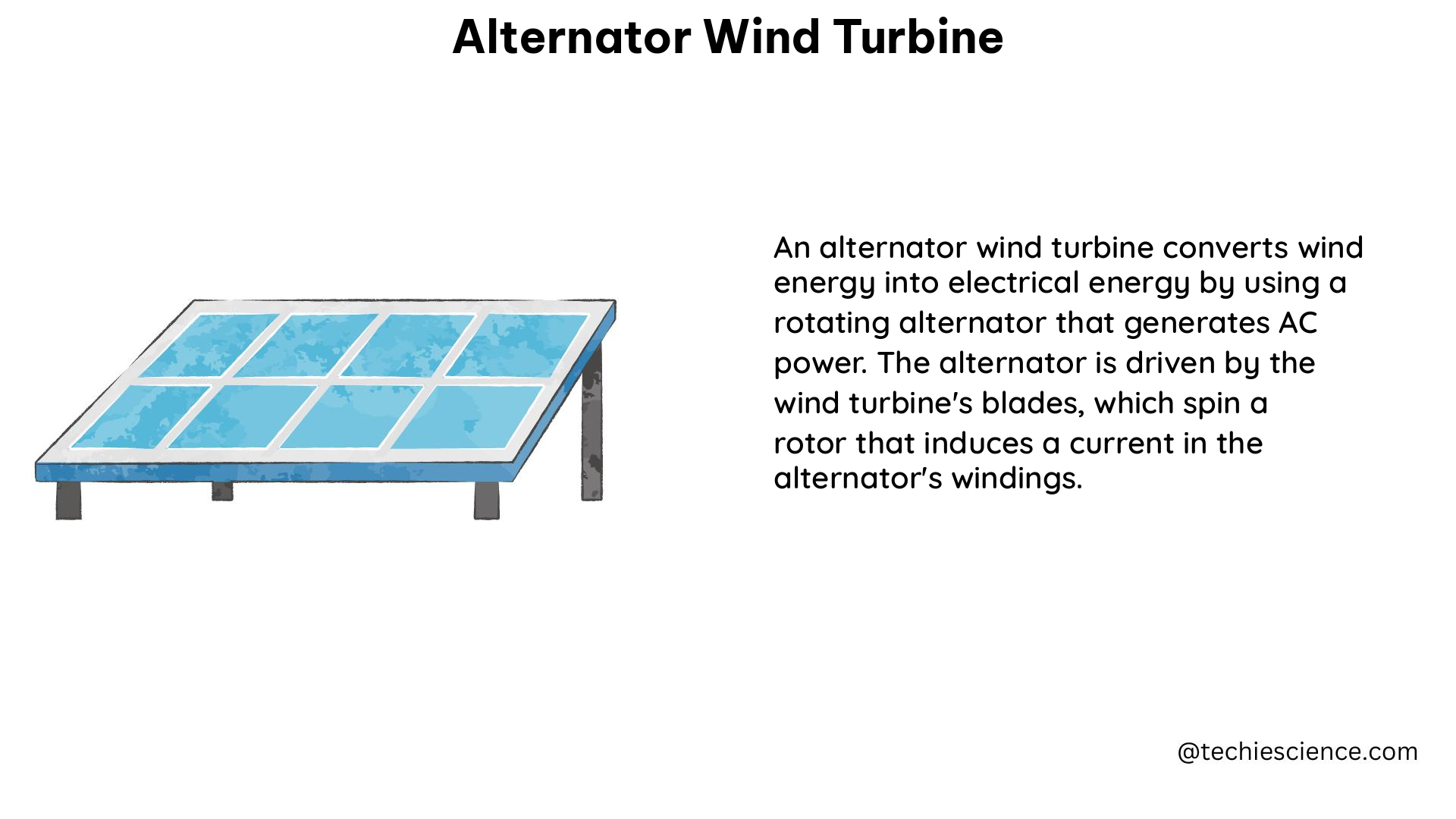An alternator wind turbine is a device that converts the kinetic energy of wind into electrical energy through the rotation of an alternator. The alternator, a key component of the wind turbine, consists of a rotor, stator, and rectifier. The rotor is connected to the wind turbine blades and rotates when the wind blows, inducing a current in the stator windings. The rectifier then converts the alternating current (AC) produced by the stator into direct current (DC) for storage or immediate use.
Power Output Measurement
The power output (in watts) of the wind turbine is a critical metric that can be determined by multiplying the voltage (in volts) and current (in amperes) produced by the alternator. To measure these parameters, you can use a multimeter or a power meter. Connect the voltage probes across the output terminals of the wind turbine’s alternator and the current probe in series within the electrical circuit of the wind turbine.
The power output can be calculated using the following formula:
Power Output (W) = Voltage (V) × Current (A)
It’s important to note that the power output will vary depending on the wind speed, rotor speed, and load on the wind turbine. Monitoring the power output over time can provide valuable insights into the turbine’s performance and efficiency.
Rotor Speed Measurement

Another essential parameter is the rotor speed (in revolutions per minute or RPM), which can be measured using a tachometer or an optical sensor. The rotor speed is directly proportional to the wind speed and inversely proportional to the load on the wind turbine. By measuring the rotor speed, you can gain insights into the wind conditions and the efficiency of the wind turbine.
To measure the rotor speed, you can use a digital tachometer or an optical sensor that can be mounted near the rotor shaft. The tachometer or sensor will provide a direct readout of the rotor speed in RPM.
Torque Measurement
The torque (in newton-meters or Nm) produced by the wind turbine is another critical metric that can be calculated from the power output and rotor speed. The torque is a measure of the force required to rotate the wind turbine blades and is directly proportional to the power output and inversely proportional to the rotor speed.
The torque can be calculated using the following formula:
Torque (Nm) = Power Output (W) / (2π × Rotor Speed (RPM) / 60)
Measuring the torque can help you determine the efficiency of the wind turbine and the suitability of the site for wind energy generation. This information can be used to optimize the turbine design and ensure maximum power generation.
Wind Speed Measurement
The wind speed (in meters per second or m/s) is a crucial factor that can affect the performance of the wind turbine. The wind speed can be measured using an anemometer, and the data can be used to determine the average wind speed, the turbulence intensity, and the wind direction.
When measuring the wind speed, it’s important to consider the placement of the anemometer. The anemometer should be positioned at a height that is representative of the wind conditions at the turbine’s hub height. This will ensure that the wind speed data accurately reflects the conditions experienced by the wind turbine.
The wind speed data can be used to optimize the wind turbine design and the site selection. By understanding the wind conditions at a specific location, you can choose the appropriate turbine size, blade design, and tower height to maximize power generation.
Best Practices for Accurate Measurements
To ensure accurate and reliable measurements of the wind turbine performance, it’s essential to follow best practices throughout the monitoring process. These best practices include:
-
Selecting Consistent Wind Conditions: Ensure that the measurements are taken under consistent wind conditions, such as steady wind speed and direction, to minimize the impact of environmental factors on the turbine’s performance.
-
Using Appropriate Loads: Apply appropriate loads to the wind turbine during the measurement process to simulate real-world operating conditions. This will help ensure that the data collected is representative of the turbine’s actual performance.
-
Maintaining Equipment Regularly: Regularly maintain the wind turbine components and monitoring equipment to ensure they are functioning correctly. This includes calibrating sensors, cleaning equipment, and replacing worn parts as needed.
-
Documenting Measurement Procedures: Carefully document the measurement procedures, including the equipment used, the measurement locations, and any environmental factors that may have influenced the results. This will help ensure the data is interpreted correctly and can be used for future analysis.
By following these best practices and using appropriate monitoring equipment, wind energy professionals can obtain accurate and reliable data on their turbines’ energy production. This data is essential for optimizing turbine design, identifying potential issues, and ensuring maximum power generation under various wind conditions.
Reference:
- Measuring the Performance of a Wind Turbine
- Torque Measurement in Wind Turbines
- How Do You Measure Electricity on a Wind Turbine?

The lambdageeks.com Core SME Team is a group of experienced subject matter experts from diverse scientific and technical fields including Physics, Chemistry, Technology,Electronics & Electrical Engineering, Automotive, Mechanical Engineering. Our team collaborates to create high-quality, well-researched articles on a wide range of science and technology topics for the lambdageeks.com website.
All Our Senior SME are having more than 7 Years of experience in the respective fields . They are either Working Industry Professionals or assocaited With different Universities. Refer Our Authors Page to get to know About our Core SMEs.